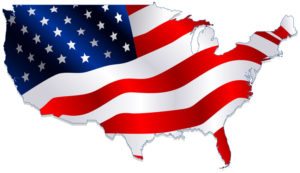One thing that I have noticed working in the contact center services space is that those of us in leadership positions can so easily get distracted by the chatter around various flavor-of-the-month delivery models. But, sometimes the best possible alternative is the one closest to home. This is really the case with US onshore contact center support; while subject to a lot of rhetoric of late, there are many cases in which this approach simply makes sense. Provided BPO players make realistic recommendations to their clients in terms of where this business will be best served, both outsourcing vendors and enterprises will benefit.
 In the grand scheme of things, contact center delivery from the US is nothing new. In fact, despite some popular misconceptions, there are more domestic workstations servicing American consumers than ones overseas doing the same. And onshore outsourcing continues to grow. Admittedly, not at the same pace as some of the more aggressive offshore and nearshore locations, but in a market the size of that of the US, even 2 – 3% per annum makes a difference. A logical question is ‘what is driving this US onshore expansion?’
In the grand scheme of things, contact center delivery from the US is nothing new. In fact, despite some popular misconceptions, there are more domestic workstations servicing American consumers than ones overseas doing the same. And onshore outsourcing continues to grow. Admittedly, not at the same pace as some of the more aggressive offshore and nearshore locations, but in a market the size of that of the US, even 2 – 3% per annum makes a difference. A logical question is ‘what is driving this US onshore expansion?’
Logically speaking, there is no simple answer to this, as there are a lot of factors that are driving (and will continue to drive) domestic contact center expansion. An obvious one is the desire on the part of US enterprise executives to leverage the common culture and familiarity with local products/services that American agents bring to the table. In fact, by my own experience there are some cases where using a US agent makes the difference between a good interaction and a great one. But this is only part of the story.
A great way to understand the growing popularity of United States contact center delivery is by looking at the evolution of verticals using third-party contact center services. Whether mandated by government or industry bodies, compliance-heavy sectors are looking onshore for their customer support needs. In such instances, it would be too costly to move work overseas, and sourcing support domestically just makes sense.
And what about high-end customers? This is sometimes a touchy subject, in the minds of many executives, a set of consumers that have shown a great deal of loyalty and propensity to spend with a particular company deserve a locally-sourced team of agents to provide a level of service that has the ‘home-touch’. When it comes down to keeping a loyal end-user happy or losing their customer, I certainly know the approach I would take.
There can be no argument that offshoring and nearshoring have a great deal of value in our industry. I have written about this extensively, and stand by the business model. However, diversified delivery options for US clients must include onshore capacity, targeted to the right functions, products/services and verticals.

